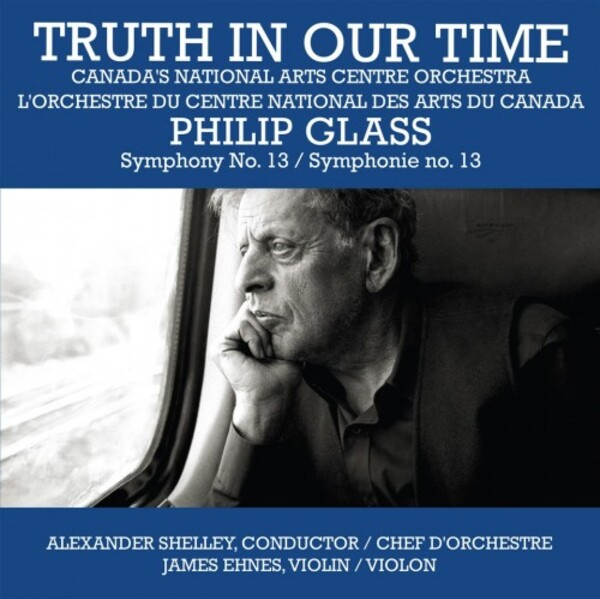Orange Mountain Music and the National Arts Centre Orchestra of Canada release “Truth in Our Time”, the album featuring Philip Glass’ “Symphony No. 13”.
On 30 March 2022, the world premiere of Philip Glass’ Symphony No. 13 took place in Toronto’s Roy Thomson Hall. It was commissioned by the National Arts Centre Orchestra of Canada (NACO) from the American composer as a tribute to the late Canadian-born American journalist Peter Jennings (1938-2005), who was considered the last great news anchor in the USA.
The tribute concert to Jennings was entitled Truth in Our Time, and the programme was completed by performances of three other works: a short piece, Zeiss After Dark, by the Canadian composer Nicole Lizée (Gravelbourg, 1973); the Concerto for Violin and Orchestra in D major, Op. 35 by Erich Korngold and Symphony No. 9 by Dmitri Shostakovich, and the intervention of the French-Canadian poet and composer of Togolese origin Yaovi Hoyi, known artistically as YAO, who performed his poem Etrange absurdite.
Shortly before the two-years anniversary of that world premiere, the Orange Mountain Music label, owned by Philip Glass, has today released the album Truth in Our Time, which includes the entire programme of that concert, performed by NACO, and recorded live at Southam Hall, the Orchestra’s home in Ottawa.
About the commissioning of this symphony, the 13th of a total of 14 so far, Glass wrote that he had first heard the National Arts Centre Orchestra of Canada live “in 2016 at the Glenn Gould Prize concert when they performed my Symphony No. 8. I have had a home in Nova Scotia for over 50 years and come here every year. And a number of my pieces have premiered in Canada over the years. When invited by the NAC Orchestra to compose a new work, I began to think of a new full-scale instrumental symphony to be part of their program Truth in Our Time. The piece is part of the kind of music which I view to be a new body of work that started with Symphony No. 11 from five years ago. The journey continues to explore my own ideas about the language of music as it has evolved for me in the form of these symphonies.”
“What can a piece of music express about the idea of truth? When we consider a figure like Peter Jennings, a Canadian by birth, an immigrant, a journalist, an American by choice, rather than making a proclamation about ‘what is truth,’ for the composer we are on much better ground when we talk about ‘This is the music that I listen to, this is the music that I like, and this is the music that I write’.”
Glass started to compose Symphony No. 13 in the summer of 2020 in New York City. Obviously, Glass’ music stands out from the rest, clearly from the rest of the programme. As the composer himself points out, his last four symphonies, although identifiable with his personality – his characteristic repetitions and arpeggios appear and are written with a great economy of means, without hiding his graceful melodies – also offer differences with his past. The first movement follows a sonata form, and both the secondary idea and the development present an unusual polytonality: the chords gather in a kind of halo of ring-modulated dissonance, while moving away from the solidity of tonality as never heard in Glass. Little ideas keep popping up and seem to be discarded. The first two movements avoid codas. The finale, on the other hand, features a quintuple time signature and ends with a brief coda, which feels like a true double time signature, but throughout this movement Glass offers a lot of surprises, as if he is indulging in improvisation (he isn’t, at all) rather than what one might expect. It was simple, but also naïve, not trying to guide any feelings, but nonchalantly opening up a myriad of them.
